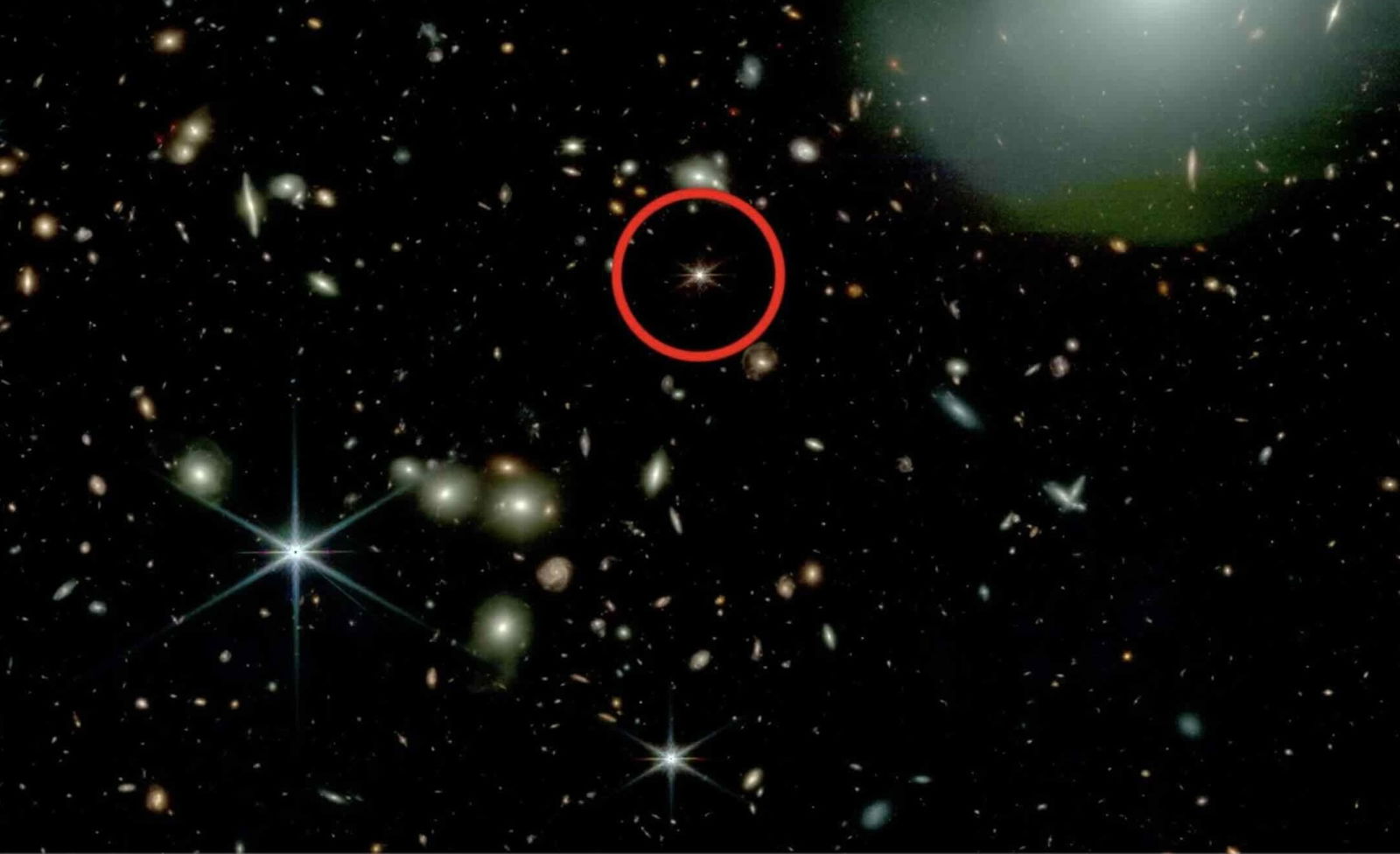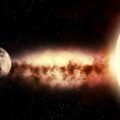Astronomers say the discovery of drifting quasars from the early universe are challenging our understanding of how these massive, luminous, and extremely distant objects could have formed, according to new findings made possible by NASA’s James Webb Space Telescope.
Quasars are extremely bright celestial objects that are believed to possess massive black holes, and some current theories propose that they may play a significant role in the evolution of galaxies.
Many of these objects occupy galactic neighborhoods where dozens of quasars all coexist close to one another in so-called “quasar fields.” However, some of these objects are also known to exist much further apart from the galaxies most are commonly associated with.
Now, according to new findings by astronomers using data obtained with the James Webb Space Telescope, several of these “lonely quasars” appear to date back more than 13 billion years, raising intriguing questions about how they could have formed at such an early period in the universe.
Questions About Quasars
Ranking among the brightest objects ever observed in the universe, some of the earliest quasars identified by astronomers date back to as early a few hundred millions of years after the Big Bang. This is a challenging discovery for astronomers, given that the early appearance of these objects seemingly does not account for how they could have become so massive and bright within a relatively short period, cosmically speaking.
Existing theories hold that some of these early quasars could represent areas where dense regions of primordial matter capable of feeding these objects once existed. This observation could also account for the appearance of “quasar fields” where these luminous objects coexist alongside clusters of smaller nearby galaxies.


This all seems to conflict with new observations led by a team of MIT researchers, who say that some of these ancient celestial objects appear in regions where there is no evidence of the matter-rich galactic environments nearby that likely would have been required for them to take shape.
Peering back in time to reveal distant regions of the universe as they looked some 13 billion years ago, the team examined a series of early quasars and their surrounding areas, which revealed something surprising: several of them appeared to be quite far removed from any nearby sources of mass capable of fueling the supermassive black holes they are suspected of containing.
“Contrary to previous belief, we find on average, these quasars are not necessarily in those highest-density regions of the early universe,” according to Anna-Christina Eilers, assistant professor of physics at MIT and one of the members of the study team.
Eilers said she and her colleagues have a hard time understanding how these “lonely” quasars could have formed, let alone what could have propelled them to such large sizes in the absence of any surrounding sources of matter.
Galaxies Hiding in Plain Sight
One possibility that astronomers propose for how these celestial giants may have formed involves the idea that there may be galaxies nearby after all, but which are obstructed from view by large quantities of cosmic debris.
Five of the newly detected quasars are among the oldest ever observed, and with supermassive black holes powering them to energy levels as much as a billion times more than the Sun and producing trillions of times as much light, there must be a significant source of matter to feed them.
By studying imagery of the five objects obtained since August 2022, several “mosaic” images were compiled that revealed each quasar’s field. Additional measurements of light across several wavelengths allowed Eilers and the team to discern between objects and sort out the distances between galaxies and their central quasar.
Despite their brightness, Eilers said she and her team wouldn’t have been able to detect the ancient light from these distant objects without the James Webb Space Telescope’s powerful instruments.
“For the first time, JWST enabled us to look at the environment of these quasars, where they grew up, and what their neighborhood was like,” Eilers said in a statement.
“We found that the only difference between these five quasars is that their environments look so different,” Eilers says. “For instance, one quasar has almost 50 galaxies around it, while another has just two.”
Eilers said she and the team were surprised to see quasars of similar size and brightness under such vastly different conditions, observations that raise significant questions about our understanding of the universe.
Things Aren’t What They Seem
An astronomical problem arises from the team’s observations, since accounting for the presence of quasars in the early universe requires large sources of matter to fuel them. However, more than 13 billion years ago, the cosmic processes that would have given rise to the accumulation of matter astronomers believe would be required in order for such large celestial objects to form should not have had time to take place.
Integral to the processes that led to the accumulation of matter over time is dark matter, the long hypothesized non-luminous material believed to populate our universe. Following the Big Bang, dark matter likely began to coalesce into filaments that created pathways for the accumulation of gas attracted by the gravity they exerted. The highest density regions arising from such processes are where quasars should appear, at least in theory.
Elia Pizzati, a graduate student at Leiden University and one of the study’s co-authors, says such ideas involving dark matter are likely to be sound, and appear to match simulations that she and her colleagues can contrast against their own recent observations.
“By comparing our observations to these simulations, we can determine where in the cosmic web quasars are located,” Pizzati said.
“The main question we’re trying to answer is, how do these billion-solar-mass black holes form at a time when the universe is still really, really young?” Eilers said, an observation with profound implications in terms of our understanding of the universe and its evolution. If current theories are accurate for the most part, the presence of “lonely” quasars presents a significant astronomical mystery. Alternatively, their presence could also imply that something is incomplete about our understanding of the cosmos.
“Our results show that there’s still a significant piece of the puzzle missing of how these supermassive black holes grow,” Eilers said in a recent statement.
“If there’s not enough material around for some quasars to be able to grow continuously, that means there must be some other way that they can grow, that we have yet to figure out.”
The new study by Eilers, Pizzati, et al, “EIGER. VI. The Correlation Function, Host Halo Mass, and Duty Cycle of Luminous Quasars at z ≳ 6,” was published in The Astrophysical Journal on October 17, 2024.
Micah Hanks is the Editor-in-Chief and Co-Founder of The Debrief. He can be reached by email at micah@thedebrief.org. Follow his work at micahhanks.com and on X: @MicahHanks.

